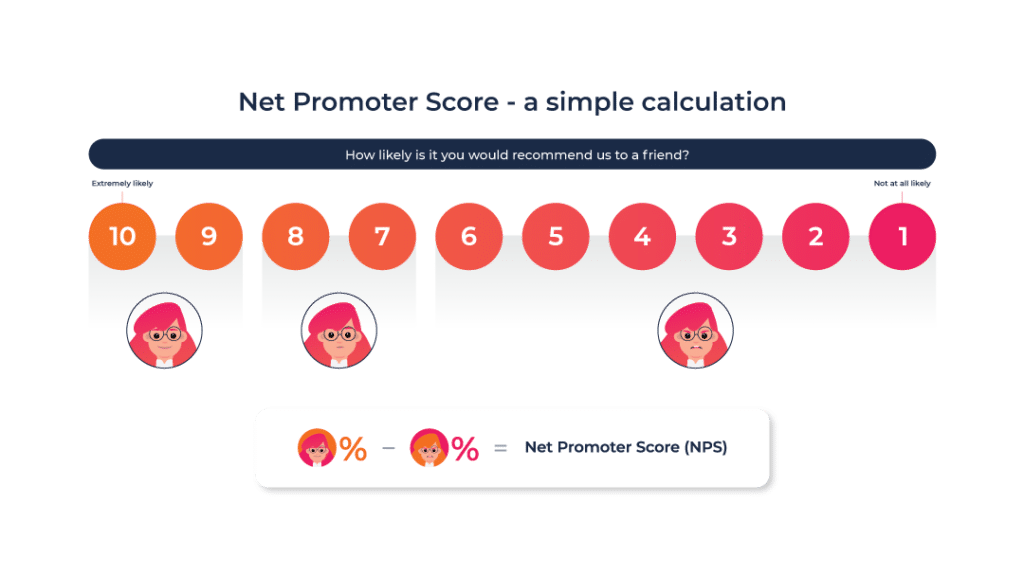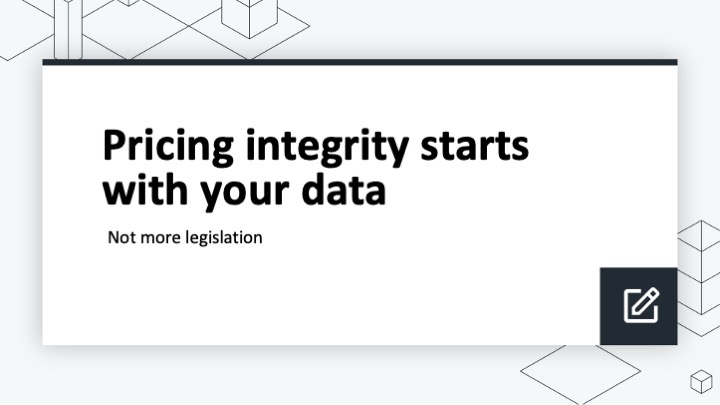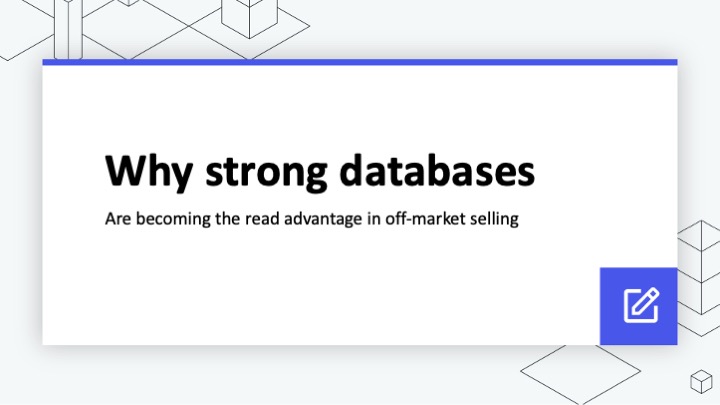Reapit in Australia & New Zealand

How to create a real estate newsletter that connects with your audience
Learn how to craft a compelling real estate newsletter - from defining your audience and content mix to designing for readability, setting a consistent schedule, and tracking results - for better client engagement and brand presence.
How do you create a real estate newsletter that people want to read?
While slick social videos and virtual reality experiences might be all the rage when it comes to capturing attention in a crowded market, the humble email newsletter is still a stalwart of the real estate industry.
But while real estate newsletters might be common, getting them right isn’t. Keen to keep your content engaging, and make sure it gets noticed? Read on.
Give the people what they want
Real estate newsletters are essentially content marketing. And the first rule of content marketing is to give your audience what they want. It’s easy to get caught up in telling your readers what you want them to hear, but there’s little point if that’s not what they’re interested in.
You know your audience best. So when you start considering what to put in - and leave out - of your newsletter, tailor your choices to that audience. Here are some real estate newsletter ideas to get you started.
Blog posts
Use your real estate newsletter to highlight your most popular and relevant posts. These could be how-to guides, interviews with real estate experts, industry news and information, guest-written content, or anything else that’s likely to catch your readers’ eyes.
Market updates
It’s a fair bet that your audience will be interested in what’s going on in the local and national real estate markets. And as a real estate professional, you’re perfectly positioned to give them insights they may not be able to get anywhere else. Leverage your expert knowledge to establish yourself as an authority on all things property.

Handy resources
Some handy resources for buyers, sellers, owners, and renters make a great addition to both real estate sales and property management newsletters. These might include tips on interior design, refreshers on tenants’ rights, tips on finding finance, auction results, or information on how to ace a routine inspection.
New government initiatives
Is there a new piece of legislation that specifically impacts the real estate industry? Let your readers know. Whether it’s a change to smoke alarm compliance requirements or a fresh incentive for home buyers, including this sort of information in your newsletter is an easy win when it comes to capturing attention.
NPS results
If you’ve started using Yardstick or another NPS tracking tool to measure your customers’ satisfaction, you may want to start highlighting your results. While you don’t want to overdo it and sound braggy, there’s no harm in deploying a little social proof.

Customer testimonials
Once you’ve identified some customers that absolutely love your work, your newsletter is a great place to give them a shout out. Sharing positive customer testimonials is a great way to build trust in your brand, particularly in real estate, which thrives on referrals.
Polls and questionnaires
Including polls and questionnaires is an easy and effective way to build engagement, assuming they’re of interest to your audience. Survey your readers about relevant real estate issues, and if you get a strong response, make sure to share the results in your next newsletter.
High-value extras
Use your newsletter to let your audience know about any industry-focused ebooks, reports, other publications, or infographics your agency or network has created. These sorts of meaty, high-value pieces of content can make a real estate newsletter stand out among the crowd and give your audience a compelling reason to keep opening emails.
Add a little flavour
All real estate agents and agencies have their own personalities, and that should come through in your newsletter. The more genuine your communications are, the more likely your readers are to connect with your content.
No matter what your real estate agency’s brand identity is, there are a few ways to help it shine through.
Tone of voice
An engaging, audience-appropriate tone of voice is the cornerstone of content marketing. Much like with the content itself, the tone of voice you use for your real estate newsletter - and for everything else - should be heavily influenced by your audience.
Consistency is key with tone of voice, so choose a voice that resonates with your real estate agency’s brand and stick to it.
A personal touch
Another key aspect of content marketing that should influence how you create your real estate newsletter is storytelling. As a general rule, people respond much more readily to narrative concepts than they do to dry facts and figures. This is why many of the most popular - and memorable - pieces of marketing feature entertaining and engaging stories.
Encourage the readers of your newsletter to make a long-lasting and genuine connection with your brand by giving them content they relate to. If your real estate agency is involved in the local or wider area, perhaps through participating in charity fund-raising or sponsoring community events, use your newsletter to promote it.
Distinctive design
If you have the time and resources, it’s also worth considering the design of your real estate newsletter. Readers spend much less time scanning emails than you might think, so everything you can do to increase your content’s impact will count in your favour.

Avoid a newsletter design that’s too busy and hard to read, features large blocks of copy, or has text in too many fonts, colours, and sizes. Instead, break it up with subheadings, use images to grab attention, and offer enticing snippets to encourage readers to click through from your newsletter to your website.
If you’re not sure where to start, there are plenty of real estate newsletter templates online to look at for inspiration. You could even see how we write our newsletter by subscribing to our fortnightly updates (fill in the form at the bottom of this page to get on the list).
Optimise your real estate newsletter
Of course, it’s not just what you include in your real estate newsletter that counts. The best content, design, and brand in the world won’t cut through without a solid strategy behind it. That means how often you send your newsletter, how long it is, what subject lines you use, and a host of other factors.
While every audience is going to have different preferences, here are a few general tips to get you started.
Find the right frequency
Unfortunately, especially for those who like hard and fast rules, frequency is all about finding the right rhythm for you and your audience. Too often and your readers will get frustrated and unsubscribe, too infrequently and they might not have a chance to build up a real rapport with your brand.
Once a month is a good baseline to start with, but whatever you choose, you should try to be consistent. Your customers will be confused, and quite possibly annoyed, if you suddenly start sending emails more frequently.
Craft compelling subject lines
The first barrier any real estate newsletter faces is getting opened at all. A substandard subject line will mean your newsletter goes unopened and unread or even gets caught in a spam filter. While writing an attention-grabbing subject line isn’t always easy, there are some general rules to help.

- Be consistent about how you flag the email as a newsletter in the subject line, so your readers know what they’re getting. Trying to trick people into opening and reading the email might work once, but it will burn up goodwill unnecessarily.
- Use action-oriented language and speak directly to your audience. Build a sense of excitement and urgency and inspire people to read on.
- Avoid overly spammy words to skip email inbox filters and avoid overpromising. Email clients and readers are savvier than ever, and it’s not worth losing your readers by trying too hard.
- Stay short and concise to ensure your newsletter recipients can read the entire subject line, no matter what email client they use. Research shows around 41 characters is optimal, so keep it tight.
- Consider personalising your subject lines with the first name of the recipient to increase open rates.
Pick a sender
Another aspect to consider when optimising your newsletter is who the email will be coming from. The right answer to this will depend on your real estate agency and your brand, but there are a few choices to consider.
For most agencies, it makes sense to use the business name rather than that of an individual. But for agencies who have a brand based around a particularly popular or well-known personality - such as a principal or senior property manager - that’s also a strong option.
It’s also worth putting some thought into the actual email address that the newsletter will be sent from. If possible, you should avoid using a no-reply address. As well as seeming impersonal, this also eliminates the possibility of starting a genuine discussion with your audience.
Optimise for mobile
Across the globe, around half of all emails are opened on mobile devices. So if your newsletter isn’t optimised for mobile, you’re likely alienating a solid portion of your mailing list. Ensuring your email newsletters look great on any device isn’t foolproof, but there are some ways to hedge your bets.
- Use a responsive template if possible. Responsive templates will automatically adjust to suit the width of the screen they’re being viewed on.
- Reducing image file sizes will make your newsletter load fast
er, which will help counteract slower download speeds on mobile devices. Services such as JPEGmini can reduce file size by up to 80 percent without loss of quality.
- Check the size of important buttons and links to ensure they’re easily visible. If you want your audience to click through to somewhere else like your blog, make sure it’s clear on smaller screens.
- Preview your design before you send it out to your entire mailing list to make sure everything looks good. It only takes a few seconds to send your newsletter to yourself or a colleague, and it’s well worth the peace of mind.
Mind your metrics
Whether you use MailChimp, HubSpot, or another email marketing platform to distribute your newsletter, you should have access to some basic metrics at least. Unless your real estate agency features a digital marketing specialist, there might not be time to pour over them, but keeping an eye on your progress is the first step to improvement.

If nothing else, you should at least be monitoring your open rate. Open rate is one of the simplest and most commonly tracked email KPIs, telling you how many of the recipients opened your newsletter. What counts as success depends heavily on the industry and audience, but anything between 15-30 percent is a good start.
Get writing
More than anything else, a real estate newsletter is an opportunity to connect with current, past, and potential clients, while building your brand along the way. And while this guide can help, the first - and most important step - is to take a moment, decide what you want to say, and start writing and refining.
Wondering what to read next? Find out more about Yardstick, our NPS tracking tool or how we help our customers take control of their own data with Insights Plus.



.png)

